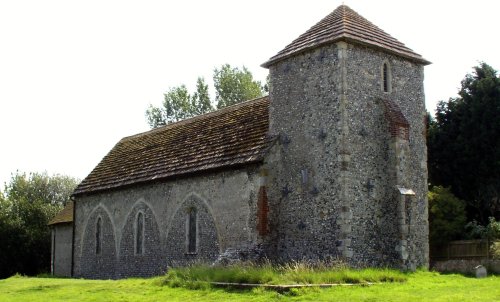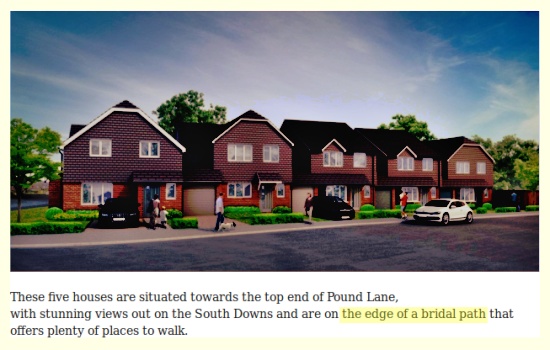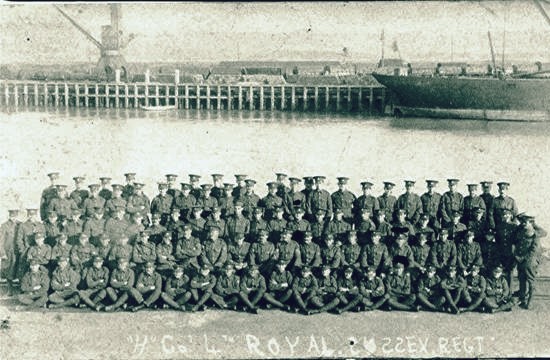
Matthew Jones, Assistant County Archivist at the West Sussex Record Office in Chichester, will talk about the Royal Sussex Regiment’s role at Gallipoli, using photographs, letters, posters, diaries, and regimental records held by the Record Office. Beeding & Bramber Local History Society at 7:45 pm on Wednesday 6th April in Upper Beeding Village Hall (there’s a car park immediately opposite).
Category Archives: Beeding & Bramber
Local Scratch Dials

A talk by Gerald Gazdar to Beeding & Bramber Local History Society at 8:30pm on Wednesday 2nd March in Upper Beeding Village Hall (there’s a car park immediately opposite).
Scratch dials (aka ‘mass clocks’) are primitive medieval sundials to be found on some of the oldest buildings in the country, mostly churches. Quite a number are located in the area around Beeding and Bramber: they can be found at Botolphs, Coombes, New Shoreham, Old Shoreham, Kingston Buci, Southwick, Lancing, Hangleton Manor and Old Erringham Chapel. St. Andrew’s in Edburton boasts no fewer than four. The talk will provide a copiously illustrated survey of these archaeological relics.
From the Sussex Ox to the First Tractor

Ian Everest talks to the Beeding & Bramber Local History Society on Wednesday October 7th at 7:45pm in the Village Hall, Upper Beeding.
Oxen were still in use at Chyngton and Exceat Farms in Seaford until the mid-1920s and were reckoned to have been in use on the Sussex Downs for over one thousand years before. The talk includes photographs of them at work in Seaford, Bishopstone, East Dean and Lewes, together with some of the more unusual non-agricultural work that they were used for. Following the demise of the oxen in Sussex, the talk looks at the evolution of farming to horses and steam power, the rioting when the threshing machines were introduced and the arrival of the first tractors.
[GJMG notes: I attended a different talk by this speaker in Henfield a couple of years ago. It remains the best local history talk I have heard. Ian Everest was brought up on one of the farms he discusses and he really knows his stuff. In addition, he is an excellent speaker with well organized material.]
‘Walk for All’
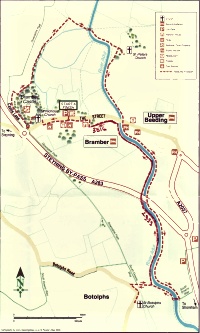 Readers may have seen coverage in the local press about two recent developments relating to footpaths and bridleways in the area due south of Bramber and Upper Beeding. Unfortunately the reporting is rather opaque as to exactly what has happened and where. One development is a new (safe) bridleway crossing for the A283. This may be the topic of a further post when a map becomes available. The second development, the one considered here, is the surfacing of a previously unsurfaced footpath running along the west bank of the Adur. This has been compacted and it can now be navigated by people pushing buggies, prams, pushchairs and strollers, or those in invalid carriages or wheelchairs. The newly compacted path runs from St. Botolph’s (almost) to the centre of Bramber. You can click the thumbnail for a PDF map that shows the enhanced section as a continuous red line marked 3516 and 1933 (done by hand — other footpaths appear as segmented red or green lines).
Readers may have seen coverage in the local press about two recent developments relating to footpaths and bridleways in the area due south of Bramber and Upper Beeding. Unfortunately the reporting is rather opaque as to exactly what has happened and where. One development is a new (safe) bridleway crossing for the A283. This may be the topic of a further post when a map becomes available. The second development, the one considered here, is the surfacing of a previously unsurfaced footpath running along the west bank of the Adur. This has been compacted and it can now be navigated by people pushing buggies, prams, pushchairs and strollers, or those in invalid carriages or wheelchairs. The newly compacted path runs from St. Botolph’s (almost) to the centre of Bramber. You can click the thumbnail for a PDF map that shows the enhanced section as a continuous red line marked 3516 and 1933 (done by hand — other footpaths appear as segmented red or green lines).
[Many thanks to Martin Leigh-Pollitt of the Steyning & District Partnership for providing the map.]
Beeding, Bramber and Sussex in WWI

A talk by Kevin Newman to Beeding & Bramber Local History Society on 4th February at 7:45pm in the Village Hall, Upper Beeding. The talk includes material relating to the fallen and survivors from Botolphs, Small Dole and Edburton.
The Fall & Rise of the de Braose Dynasty
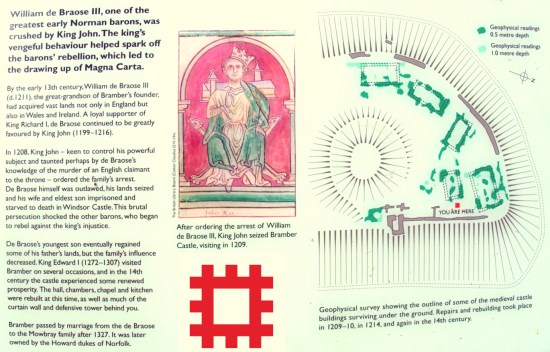
The de Braose family, the Lords of Bramber, played a significant role in the history of England from their seat in the Adur Valley. The presentation will bring to life the turbulent times of the Anarchy ‘When Christ and His Saints Slept’. You will hear of the ‘Ogre of Abergavenny’ whose wife and child fell victim to King John’s rage, of the bishop who built cathedrals and opposed the King, and of his brother the baron who regained the family’s status and lands. A talk by John & Jeanette Simpson to Beeding & Bramber Local History Society on January 7th at 7:45pm in Upper Beeding Village Hall.
3Bs in WWI (reprise)
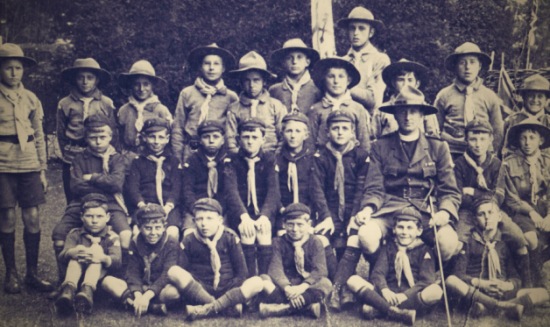
Beeding and Bramber Local History Society have curated a display about life in Beeding, Bramber, Botolphs and Small Dole during the First World War. It includes medals, photographs, letters and postcards from the front, the story of the men who died and those who survived. The display ran for three days in early November at the Gladys Bevan Hall in Upper Beeding. You now have one final chance to see it, on Saturday 6th December from 12:00–3:00pm in the small back room of Upper Beeding Village Hall (opposite the car park).


